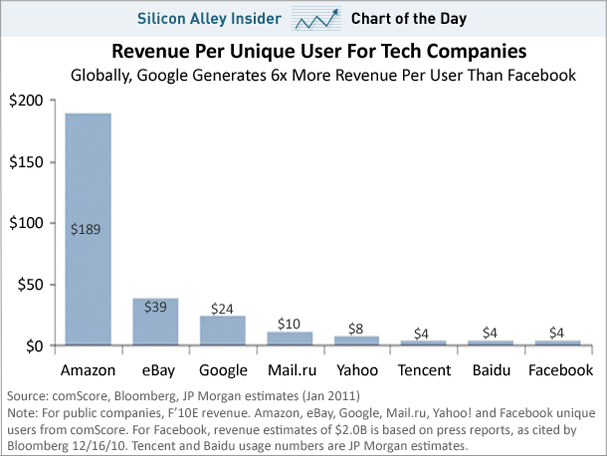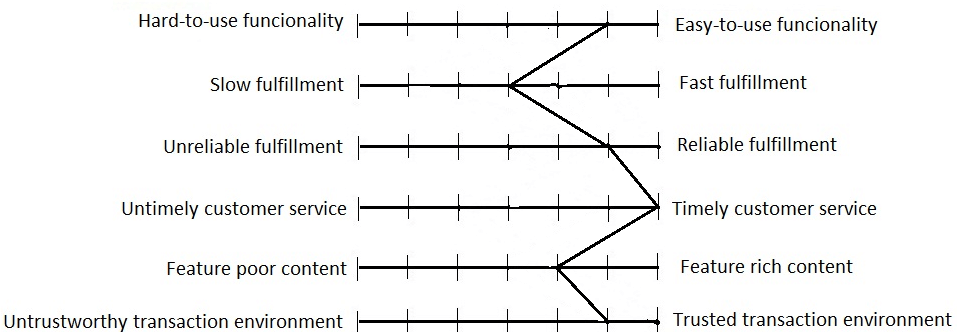Case Study – A Focus on Young Amazon’s Customers


Objective
Students must develop and submit two originally written papers in the style of a case study in promotional strategy. Each paper must be about an existing business and contain a survey of indepth research on an issue that is relevant to a main concept in this course. Each project will incorporate a specific issue concerning the development and implementation of an integrated promotional program as an application of the theory discussed in the reading and discussions.
Collection of data and analysis are major features of these projects. The professional authors at Writology.com are available 24/7 to help with data collection, background research, and in-depth analysis. When you buy custom essays with our writing company, your student life becomes easier. You get all the required data and support to learn, improve your writing and analytical skills.
Technical Specifications
- The case study must be at least 1,000 words, which includes your body of text and discussion questions. The minimum word length excludes title/headings, references, and appendices.
- It is preferred that you use 12-font Times New Roman with 1” margins. Spacing is up to you.
- Use headings and subheadings thoughtfully and appropriately
- Please submit either a word document (.doc, .docx) or pdf document (.pdf).
- A large majority of the writing must be original. Each submission will be run through Blackboard’s SafeAssign software to detect plagiarism. This software searches the text of submitted documents to all websites and many published resources, including textbooks and news articles. So, make sure that any “borrowed” text is clearly quoted in quotation marks and its source is cited. Please refer to the “Academic Integrity” and “Code of Ethics” portions of the syllabus for related information.
- Each submission must contain a formatted and complete references section. The specific formatting style is your choice, but each source must include an author, publication title, publication date, and any other relevant information (e.g., website, publisher, etc.).
- The submission must contain a title page with all contributing team members’ names. Any student’s name not contained in the submission will not receive credit for this assignment.
- The report and presentation must be professional in appearance and content, including containing correct spelling, grammatical, and other technical writing criteria.
A Focus on Young Amazon’s Customers
Amazon.com is a seller that strives to deliver anything customers might want to buy online (“About Amazon”, n.d.). It offers them low prices, convenience, and a wide selection of merchandise (Chaffey, 2014). Therefore, elderlies are a segment of the market that is of interest for this company. Amazon.com focuses on customer experience. Moreover, this seller calls it customer obsession. Particularly, Amazon’s customers have to spend over a certain amount to receive free shipping offers (Chaffey, 2014). The vendor also uses recommendations as a targeted marketing tool in many email campaigns and on most of its Web sites’ pages. Besides, there is a link where its customers are able to apply a rather sophisticated filter to their recommendations, find out why items are recommended, and rate their previous purchases as well as the recommended products (Linden et al., 2003, p. 78). Young people are very susceptible to these tricks due to their lack of experience. Therefore, youth is another market segment that is of interest for Amazon. A great number of online sellers use collaborative filtering approach in their recommender systems (Leimstoll & Stormer, n. d., p. 1). In this approach, recommendations for a customer are generated based on data about previous purchases this client has made (Linden et al, 2003, p. 76). However, such the systems are a serious threat to individual privacy (Canny, n. d., p. 1). Although most online vendors do their best to keep information about their customers private, it is routinely sold after companies go bankrupt (Canny, n. d., p. 1). Hence, both above mentioned segments are underserved. As for Amazon.com, it also uses such the recommendation system (Linden et al, 2003, p. 78). Revenue per visitor is one of the key measures for any commercial website (Chaffey, 2014). From Figure 1, it follows that Amazon.com performs very well. Besides, this company has more than 76 million customers accounts (Chaffey, 2014).

Therefore, Amazon can acquire preference data for many users in one product domain and has a considerable advantage over small online vendors when entering another thanks to correlations between customer purchase choices across product domains (Canny, n. d., p. 1). Thus, it is strong enough to appeal to both segments mentioned above. In the paper the challenge of communication with youth as a target audience is identified. It also comes up with the gaps the current Amazon’s image in this segment contains. In addition, the trustworthiness of the conclusion about the communication challenge is examined, importance of considerations in choosing the gap that should be closed first is discussed, and reasons why firms have to classify their customers are explained.
The Survey of the Research
The following two scales can be used to get insight into the nature of the communication challenge (Kotler, 1997, p. 608).


The first one is the familiarity scale (see Figure 2). The second scale is the favorability one (see Figure 3). If the percentage of respondents who circle “Never Heard of” or “Heard of Only” on the first scale exceeds 50%, then the seller has to work on building greater awareness (Kotler, 1997, p. 607). Those who marked one of the other options can be asked how they feel toward services Amazon.com provides (Kotler, 1997, p. 608). If the percentage of those young customers who mark either “Very Unfavorable” or “Somewhat Unfavorable” exceeds 50%, then the vendor has to work on improving its image (Kotler, 1997, p. 608). During the study 60 randomly picked young people have been interviewed and only 25 of them chose either “Never Heard of” or “Heard of Only”. Hence, level of familiarity is satisfactory. To account the sampling error, it was figured out that 11 of the first 30 respondents marked the first two categories of the scale depicted on Figure 2.
To identify the gaps of Amazon’s image among its young customers the semantic differential tool was used. This vendor achieved loyalty of all its customers and their repeated purchases through working on easy-to-use functionality, fast and reliable fulfillment, timely customer service, feature rich content, and a trusted transaction environment (Chaffey, 2014). Therefore, the following set of dimensions was chosen: functionality, a speed of fulfillment, its reliability, timeliness of customer service, content, and transaction environment. The respondents’ averaged perception of the seller is depicted on Figure 4. Hence, young customers regard Amazon.com as the seller that delivers easy-to-use functionality, is reliable in order fulfillment, has timely customer service, and provides trusted transaction environment.

The standard deviations (SDs) of the values of the dimensions for Amazon lie in the range from 0.7 to 1.8 increments of the scale. Hence, the Amazon’s image is diffused. It suggests that the sample of respondents participating in this study is representative. Since the SDs of the speed of fulfillment and the content are 0.8 and 0.7 respectively, there are image gaps for these two dimensions. As for the other dimensions, relatively high values of their SDs make the respective image gaps to be statistically insignificant.
The stated above conclusion about the communication challenge could be misleading because change in image significantly lags behind the one in the respective firm. For instance, the public could praise a substandard seller because only highly discrediting info can call an established image of something into question. The following information about Thom McAn, the producer of shoes well known several decades ago, illustrates this point. He enjoyed high volumes of sales of its shoes in the USA during four consecutive decades starting from the fourth one of the past century (Kotler, 1997, p. 609). At that time, his shoes were fairly cheap and of good quality. However, in nineties of the past century this brand started being regarded as the obsolete one and it experienced 37.5 % decrease in sales during the ninth decade of the past century. To boost its sales, the company started to work on improving its image. Its trick consisted in making jokes about how outdated its image is (Kotler, 1997, p. 609). For instance, the company used ads claiming that “the good looking shoes ‘kept getting delivered to a Thomas McAn at 221 E. 6th St.’” (Kanner, 1994).
Choosing the gap to close first, management has to pursue the aim of being distinctly better at that which its target market values. Specifically, it should estimate the contribution to the organization’s overall favorable image that would be made by closing the gap being considered as the candidate. Besides, it is worthwhile to come up with the strategy (combination of real changes and communication changes) that can help close the gap. Moreover, the management has to estimate how long it will take to close the gap and the cost of closing the one (Kotler, 1997, p. 609).
A company has to classify its customers because there is experimental evidence that firms that specialize in meeting the needs of one group of consumers over another tend to be more profitable (Perner, n. d.).
Thus, in this research the survey in which young respondents were asked to indicate how well they know Amazon.com was conducted. Besides, in this process those who know this vendor at least a little bit were asked to indicate on how good this seller is. From the results of this survey, it can be concluded that Amazon.com has to work on maintaining its good reputation among young people and high awareness of the respective segment. However, this argument could be misleading because the customers can respond to the deterioration of the quality of services Amazon provides in a timely manner only after something extraordinary happens. Besides, in this research the survey in which respondents were asked to communicate their perception of Amazon.com through putting marks on scales depicted on Figure 4 was conducted. From its results, it can be concluded that there are the image gaps for the average speed of order fulfillment at this company and the content this vendor offers. To figure out which one should be closed first, the management should compare the values the market assigns to removing each one of these gaps. Classifying customers is important for any business because such the information can generate a profit for the firm.
References
Amazon.com. (n. d.). About Amazon. Retrieved from http://www.amazon.com/Careers-Homepage/b?ie=UTF8&node=239364011
Canny, J. (n. d.). Collaborative filtering with privacy. Retrieved from http://www.cs.berkeley.edu/~jfc/%27mender/IEEESP02.pdf
Chaffey, D. (2014, June 30). Amazon.com case study. Retrieved from http://www.smartinsights.com/digital-marketing-strategy/online-business-revenue-models/amazon-case-study/
Leimstoll, U., & Stormer, H. (n. d.). Collaborative recommender systems for online shops. Retrieved from http://citeseerx.ist.psu.edu/viewdoc/download?doi=10.1.1.87.8558&rep=rep1&type=pdf
Linden, G., Smith, B., & York, J. (2003, January-February). Amazon.com recommendations: Item-to-item collaborative filtering. IEEE Internet Computing, 7(1), 76–80.
Kanner, B. (1994, December 2). Thom McAn believes confession has to be good for the sole. The Buffalo News (Buffalo, NY). Retrieved from: http://www.highbeam.com/doc/1P2-22659003.html
Kotler, Ph. (1997). Marketing management: Analysis, planing, implementation, and control (9th ed.). Upper Saddle River, NJ: Prentice Hall.
Perner, L. (n. d.). Segmentation, targeting, and positioning. Retrieved from http://www.consumerpsychologist.com/cb_Segmentation.html